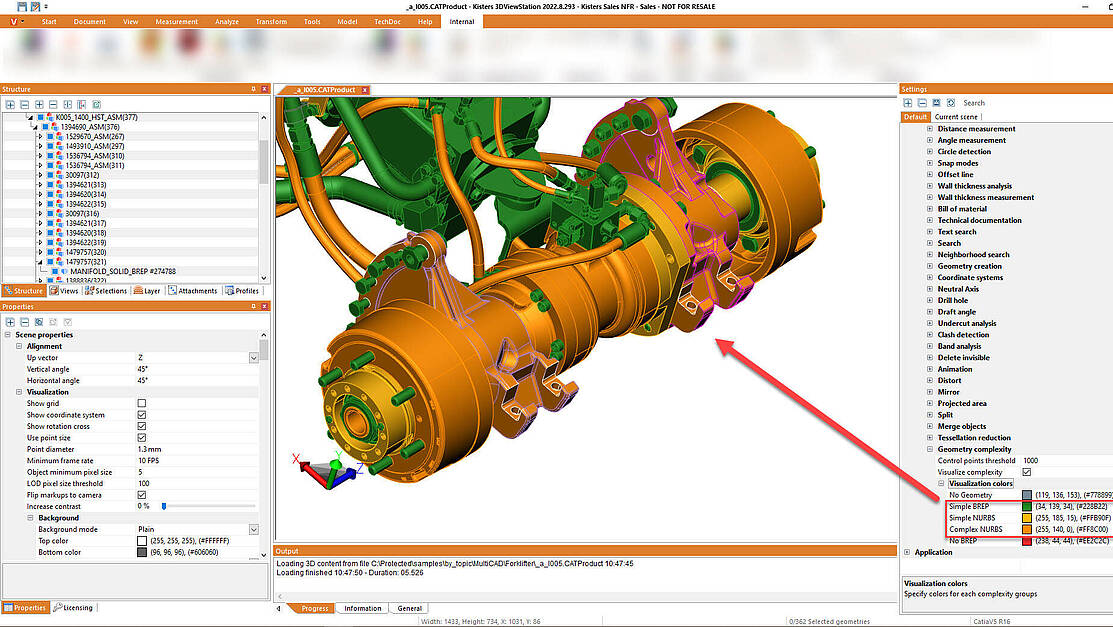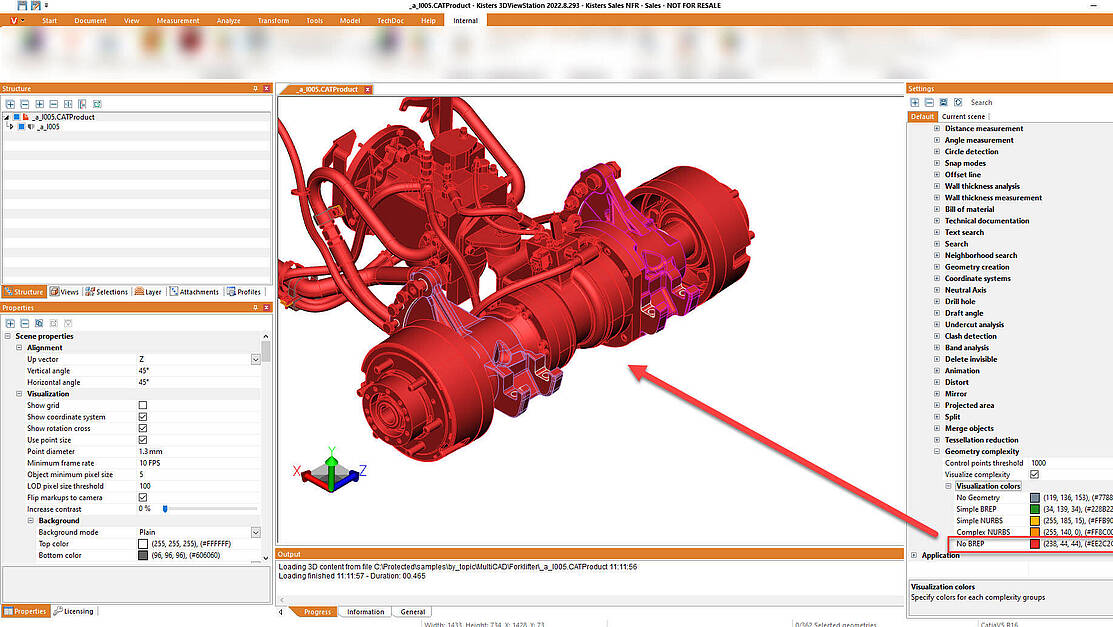The Kisters 3DViewStation is first of all a CAD viewer, which should enable as many users in the company as possible to access CAD data quickly and easily: load, view, rotate, measure, cut, compare ... Since 3DViewStation can also export to standard data formats, it is also used to export exactly the state that is currently on the screen, e.g. to STEP or JT.
However, if you are not very careful, the file size of the exported file can almost explode. This depends on how you have loaded the CAD file on the one hand and on the other hand in which variant of the target format you want to save and which object types are supported.
Let's start with the export format.
Example:
If you want to export to STEP data, you usually do this in order to be able to read it into a CAD system later. CAD systems usually expect BREP data, the exact description. This means for example for a cylinder: center of the circle, radius and height. This is "cheap" in terms of necessary storage space. A NURBS description of a cylinder already needs more space. However, it is most unfavorable to convert geometries, which are only available as tessellation, triangulation, into the very common STEP AP214. Here every triangle is translated into a surface and the complexity of the STEP file increases dramatically. This is what we call "expensive". Also, hardly any CAD system will be able to process such data properly. Even an export in STEP tesselated (AP242) will not help here.
Now let's have a look on the input file format:
If we have native CAD data, such as Catia or NX, then we can be sure that we will be able to read the BREP portion of it. Some file formats contain besides the BREP also a tessellation, which can be used for fast reading. So in case you know in advance that you will need BREP later - because you want to export to a BREP format like STEP AP214 or JT - then you should select the import options in Kisters 3DViewStation (or the batch tool KAS) to preserve the BREP. However, it might happen that within an assembly the one or the other file is only tessellated. As we know now, these will cause problems later when exporting.
And this finally leads us to the topic:
With new functions, which are currently available as APIs or in the KAS, we can color-code how complex a geometry is, whether it will be "expensive" to export, whether it consists of a simple description or possibly a jumble of triangles or other fragments. The result makes it easier for a user to recognize where problems are to be expected and where not. If necessary, it might still be possible to intervene and correct before the export is completed.
The pictures below show the same assembly twice, once loaded in BREP mode, once loaded in tessellation mode. The threshold values and associated colors can be freely defined.

